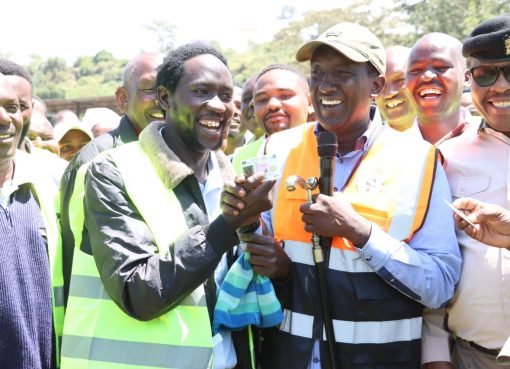Cultural and traditional artifacts have long played a vital role in preserving the heritage of various cultures especially in Kenya.
This practice however seems to be under threat of disappearing with time and an emerging generation that seems to lack interest in their culture.
But Tereza Okidi who is a 75 -year-old woman in Siaya town is doing something about it.
Blessed with the knowledge and skills of making traditional artifacts such as sisal hats, beaded necklaces and traditional dance costumes inherited from her mother, Tereza has taken it upon herself to keep culture alive while in the process making a living and even offering employment.

It all started in 2007 while she was working as a secretary at the now collapsed Dominion Farm in Kadenge area.
When the land was being cleared and papyrus reeds were being cut and disposed, Tereza remembered her skills in creating artefacts and thought of starting a project using the papyrus as a raw material.
She says when she approached the farm management with the idea, she was allocated an old disused garage to serve as her workshop. She involved a team of 13 women and 4 men to help do the various handwork in crafts under her leadership and called themselves Eagle Wings Papyrus Mills.
Tereza said that in addition to her making cultural Luo artifacts she felt proud that she could offer her skills to help at least a few people around her earn a living. Among the products the eagle wings papyrus group focused on were papyrus egg trays and booklets, and at the time they could not keep up with the orders since the production was fully manual and very laborious.
Tereza has a 19-year-old granddaughter who is keen to learn the art and the grandmother is eager to pass on the button. Tereza hopes that one day, they will be able to establish her papyrus mill.
The entrepreneur minded Tereza at some point approached the then Director of Culture at the county level and she was allowed to set up an art shop in the Culture and Library section of the county, which she still operates to date, here at the culture section, she has employed a young woman to assist her with doing the artwork.
This work is sold to customers from the provided space. They also exhibit and sell the works to visitors, foreign or Kenyans, from other counties visiting Siaya.
“From Kadenge when the farm shut down its operations, I moved to Siaya town, the people I had employed had to find other jobs because after Dominion Farm closed, I could not get papyrus easily and so I could not manage to pay them anymore, it was not sustainable as other items such as our sisal skirts traditionally called owalo were also not selling as well,” she explained with regret.
Her shop at the County headquarters, is full of hats, beaded wears, traditional three-legged stools and memorabilia she has collected over her many travels. She is usually called on to represent Siaya County in cultural forums whenever there is a need to showcase her artwork to various stakeholders that come to Siaya.
In the 25 years Tereza has been in this culture business she has gotten the privilege of traveling to several countries because of her art and met several notable people even beyond Kenya. She has been to the UNESCO headquarters in France, Rwanda, Burundi, Tanzania, and Uganda. She is also planning to go to the USA later this year.
“While in France, I was able to showcase and even sell some of my artwork. We went with some other artists and cultural dancers sponsored by the county government for the UNESCO celebrations,” explained Tereza.
She added that she has presented most of her artwork to the various political key leaders in Kenya including the late President Mwai Kibaki, president- elect Dr. William Ruto while he was serving as the Minister for Agriculture, James Orengo while serving as the Minister for Lands, Former Kisumu Governor Jack Ranguma, Siaya former Governor Cornel Rasanga, and other leaders. She has carefully kept such memorable photos in a papyrus-woven album which she said she made by herself.
Her crafts have won numerous awards during different cultural events but she is quick to add that most of such awards are not accompanied by financial rewards that would help her or support her artwork
While at Siaya Cultural center, Tereza said that she encounters many challenges, among them having people who view her of unsound mind or a “witch” owing to her works that some may view as “paraphernalia” because they don’t understand her craft.
In terms of sales, she points out that it is a challenge to sell to local people because they regard the items as for-sale-to-tourists and when they get interested and want to buy, locals offer very low prices without considering her production costs.
Tereza also cites a misconception that she is employed by the County at her shop as a challenge as this makes people reluctant to buy her items, clarifying the county government only provided her the space to work and not employment.
She however says she is strong and determined explaining, “I believe that things will change and my dream will come true of seeing more people employed under my project and having future generations understand the value of these items I make to preserve our culture as a people,” Tereza concludes as she picks up a handful of sisal to finish a hat she had been previously making.
By Vincent Ouma





